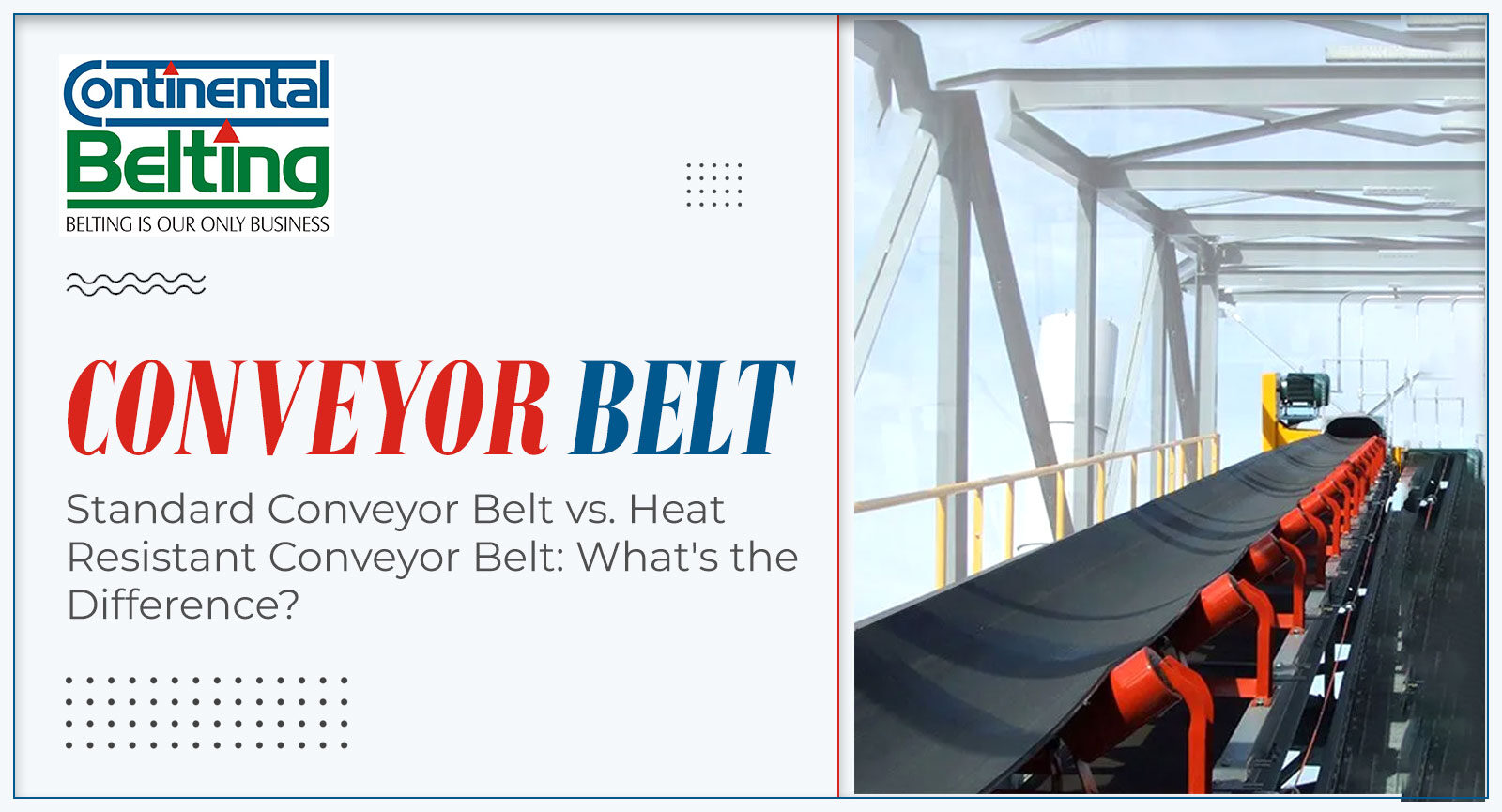Many industries rely on conveyor belt for carrying materials from one location to another. They are available in a range of types, such as regular conveyor belt and the heat resistant conveyor belt.
Due to their individual designs and material combinations, standard conveyor belt and heat resistant belt each have particular applications in a variety of industries.
- Numerous materials, such as rubber, fabric, and plastic, are used for manufacturing the standard belts.
In uses where the materials being carried are not hot, such as the retail and packaging industries, standard conveyor belts are mostly used.
- The heat resistant ones are mostly made of materials like canvas, steel, and fiberglass.
In applications where hot materials need to be transported, like in the food processing, manufacturing, and chemical industries, these belts are frequently used.
The following are some of the principal differences between regular conveyor belt and heat Resistant Conveyor Belt:
Temperature Range
Conveyor belt that is commonly used are typically only made to withstand temperatures of up to 120°F. Conveyor belt that is heat resistant can withstand temperatures of at least 500 °F.
Weight Capacity
A load of up to 1,000 pounds per foot is usually supported by standard conveyor belt. Conveyor belt made of heat resistant materials typically have a weight capacity of up to 2,000 pounds per foot.
Extra Layers
Heat resistant belts frequently have extra layers and reinforcements designed for handling high temperatures. The added layers improve insulation and heat protection, expanding the belt’s longevity.
Safety
Given their use in non-extreme environments, standard belts are generally safe to handle. Inappropriate use of them for high-temperature materials, however, can make them hazardous and create fire or security hazards.
Heat resistant belts lower the likelihood of mishaps brought on by overheating because they are specifically made for high-temperature conditions.
Maintenance and Lifespan
Both standard and heat resistant belts need proper maintenance, but the latter might require additional inspections from Heat Resistant Conveyor Belt Suppliers in India and attention because of the harsher conditions under which they operate.
However, with proper maintenance, heat resistant belts can last longer in the applications for which they were designed.
How do you determine which conveyor belt to use?
Depending on the particular requirements of your application, you can choose between heat resistant and standard conveyor belt:
The temperature of the items that are being moved
A Heat Resistant Conveyor Belt is the best option when transporting hot supplies. A standard conveyor belt is an ideal choice if the materials being transported are not hot.
They can be used to carry materials that are light and mostly at room temperature.
The nature of the materials that are being transported
Take note of the type of material you are conveying.
You may need a particular kind of belt as mentioned in the industry norms, which could be a standard or heat resistant one if they are corrosive, abrasive, or otherwise require specialised handling.
The setting where the conveyor belt will be put to use
A heat resistant belt is the most suitable choice if the belt will be employed in an adverse setting, like a chemical plant.
The budget
Typically, standard conveyor belts are more affordable than heat resistant ones. The price of the conveyor belt however shouldn’t be the only thing taken into account.
You should also take into consideration the overall cost of ownership, which includes the price of upkeep and repairs.
In the long run, discussing with a conveyor belt specialist is the best way to decide between a regular conveyor belt and a heat resistant belt.
They will help you in selecting the most suitable conveyor belt type for the specific needs you have.
Conclusion
It is essential to comprehend the main distinctions between standard conveyor belt and heat resistant conveyor belt to be able to choose the ideal belt for your application.
You can guarantee your conveyor system’s performance, security, and long-term sustainability by making the right decision, which will eventually contribute to your manufacturing operations thriving.
Continental Belting Pvt. Ltd. is among the leading Heat Resistant Conveyor Belt Manufacturers in India. They have a team of professionals who can help you choose the best conveyor belt for your company.



